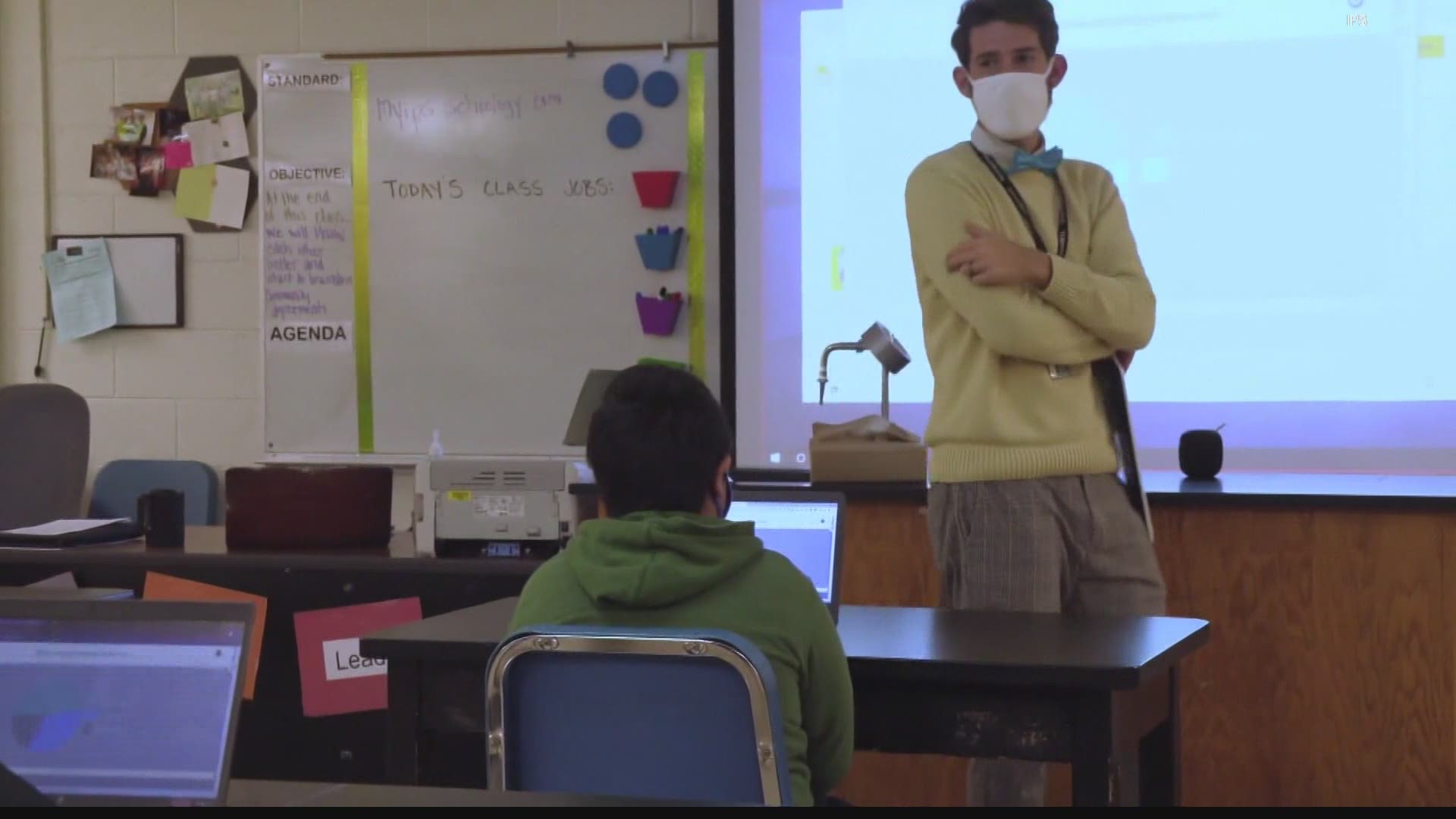INDIANAPOLIS — Gov. Eric Holcomb and state leaders discussed COVID-19 vaccinations during a weekly new conference on Wednesday. Addressing those on the front lines — including teachers — receiving the vaccine, the state said it will continue to focus the vaccine on those most at risk. That includes Hoosiers 60 and older and with pre-existing health conditions.
"Always our critical infrastructure, which our teachers will be included in, that has always been in Phase 2. When we had to first put in a preliminary plan back in October, we talked and walked through many of these things, knowing that vaccines would be scarce to begin with, and the critical infrastructure was Phase 2. We are still in Phase 1-B, our vulnerable populations," said Dr. Kristina Box, Indiana State Health Commissioner.
Holcomb emphasized he values every single life in the state.
"That's where we're starting is, how do we save lives. And, and who is most at risk and work our way down to, again, the most healthy, strapping 17-year-old that wants it," Holcomb said.
Teachers in all four surrounding states are now eligible to receive the vaccine.
School quarantine changes
Effective Monday for students having close contact with someone who is COVID-positive:
- Rules no longer require quarantine or contact tracing if students and teachers remain at least 3 feet apart and are wearing a mask at all times in the classroom.
- Quarantine rules still apply to exposures that occur at lunch, athletics, band or choir or any other school setting, or if teachers and students have removed their masks.
"Data from individual schools in the state and across the U.S. indicate that it is rare for student infections to occur from exposure in the classroom while all parties are masked. That data shows only three to five percent of infections occur in classrooms," Box explained.
Quarantine options:
- 14-day quarantine (still the safest option)
- 10-day quarantine if student in close contact never developed symptoms and wears a mask at all times when returning to school
- Seven-day quarantine if a negative PCR nasal swab test is conducted on days five, six, or seven, or a negative rapid antigen test upon return to school on day 8
The final decision on which quarantine options to use will be up to the schools.
Supplies for schools
The state also plans to send more than one million KN95 masks to schools. That's about 10 masks for every teacher, administrator, and staff. Around 600,000 additional masks for children will go to kindergarten through sixth grade. More hand sanitizer will also be available.
The state will send an initial 120 rapid antigen tests to each school and can order more if needed; about 256,000 tests in total will be shipped next week. The tests will allow schools to quickly tests students or staff and then make more immediate decisions on quarantining.

